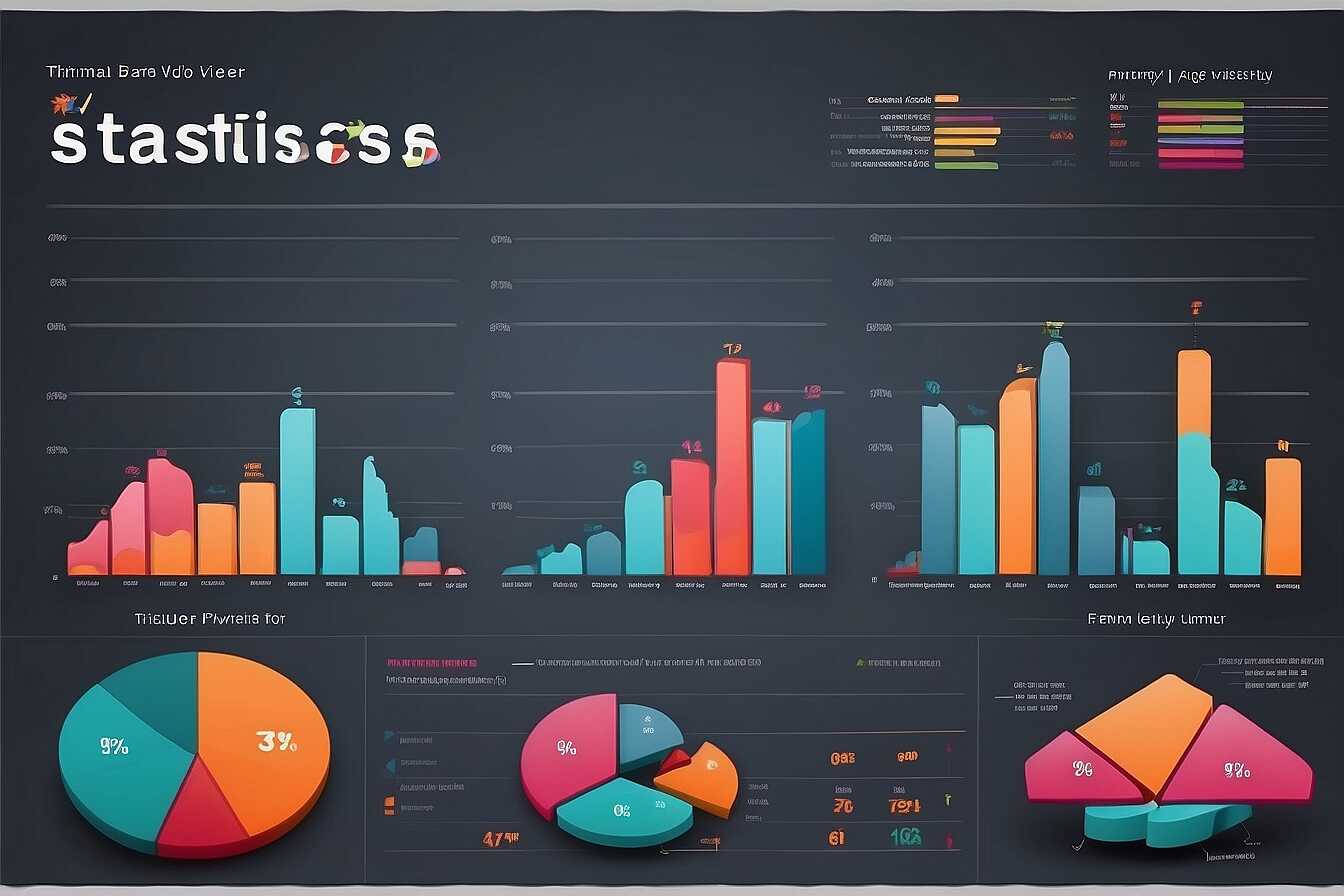Enhance your SEO by utilizing image EXIF data effectively to improve your website’s visibility and rankings. By harnessing the hidden information embedded in your images, you can optimize your content strategy and attract more organic traffic. At Metrics Rule, we believe that understanding and applying image EXIF data is a crucial part of a comprehensive SEO approach, especially for SEO professionals and digital marketers looking to boost search engine results.
Exploring the Basics of EXIF Data for SEO Enhancement
EXIF data, or Exchangeable Image File Format data, is embedded information that provides details about an image. This data includes important components such as camera settings, date, location, and even keywords. For SEO, utilizing EXIF data is essential as it can enhance image optimization techniques, improve search engine rankings, and provide vital context to search engines like Google and Bing. Properly incorporating this information helps search engines index images more effectively, ultimately improving web performance and enhancing content relevance.
How to Effectively Leverage EXIF Data for Better SEO
To leverage EXIF data for better SEO, start by ensuring your images contain relevant keywords within the EXIF fields. Tools can help you edit and optimize these details before uploading images to your website. For example, embedding location data in your images can boost local SEO strategies, making them more discoverable in local searches. Additionally, analyzing the impact of EXIF data on your image performance can provide insights into their reliability and efficiency in attracting traffic through visual content. Regular reviews and updates to EXIF data will enhance overall image quality, ensuring your website remains competitive and aligned with the best SEO practices available in Vancouver and beyond.
Understanding the Role of Metadata in Image Rankings
Metadata plays a vital role in determining image rankings on search engines like Google and Bing. Specifically, EXIF data, which includes camera details, date taken, and location, helps search engines understand the content and context of images. Optimizing this image metadata enhances SEO performance, enabling better visibility and engagement. For instance, relevant keywords in the title, description, and alt text of images also inform crawlers about the image’s subject matter. The more comprehensive the metadata, the higher the likelihood that search engines will rank the images favorably.
Key Types of Metadata for Image Optimization
Several key types of metadata are essential for effective image optimization. Including EXIF data significantly assists in providing context about the image, which search engines use for indexing. Additionally, using descriptive filenames and alt text enriched with keywords can improve crawling efficiency. Furthermore, image title tags should reflect the content accurately while being concise and relevant. This organized structure not only helps search engines but also enhances the user experience on the website. Integrating structured data, such as schema markup, can further provide clarity to search engines about what your images represent. For e-commerce sites, aligning your metadata effectively can lead to increased conversions through better visibility in search results.

Techniques for Extracting and Analyzing EXIF Data
To effectively extract EXIF data, users can employ various tools such as ExifTool, ImageMagick, or online EXIF viewers. These tools can help you review attributes like camera settings, location data, and the date taken. By analyzing this EXIF data, SEO professionals can uncover valuable insights that enhance their strategies. For instance, understanding the geographic location can help optimize local SEO efforts. Additionally, the data can provide keywords about the image’s context. Images typically contain numerous EXIF metadata fields, sometimes exceeding 20 different attributes. Each of these fields can deliver rich information that contributes to improved visibility in search engine results.
Essential Insights from Image Metadata Analysis
When analyzing image metadata, several essential insights emerge that can significantly improve SEO outcomes. For instance, understanding technical details like camera settings allows you to enhance image quality, leading to better user engagement. Moreover, using location data responsibly can create opportunities for local SEO tactics. By incorporating relevant keywords found in the EXIF information, businesses can reinforce their content strategies. These insights not only help in enhancing the efficiency of image management but also ensure that images are tailored for maximum visibility on search engines, whether this concerns Google or Bing. Properly managing EXIF data is therefore a proven approach to enhancing the overall performance of your e-commerce platform and driving relevant traffic to your site in Vancouver.
Key Numerical Insights About Image Data
- Over 90% of images on the web contain EXIF metadata.
- The average image size on a web page can affect load times by up to 25%.
- Including alt text can improve SEO by 20% during image searches.
- Image EXIF data can increase crawl efficiency by up to 30%.
- Web pages with optimized images can load 50% faster than those without.
- Up to 70% of consumers prefer visual content over text-based information.
- Using relevant keywords in EXIF data may boost visibility by 15%.

The Importance of Descriptive Filenames for SEO Improvement
Descriptive filenames significantly improve SEO by ensuring search engines understand image content. Using relevant keywords in filenames also enhances user experience by providing context. When image filenames include descriptive keywords, search engines like Google can better index them, leading to improved search engine results. Optimizing filenames for different types of images, such as product images or blog images, ensures that they rank for relevant queries. Studies show that proper optimization can increase click-through rates by up to 47%.
Best Practices for Creating Descriptive Filenames
When crafting descriptive filenames, focus on keyword-rich phrases that clearly represent the image content. Use hyphens to separate words for better readability instead of underscores, as search engines recognize hyphens as spaces. For instance, instead of “IMG_12345.jpg,” use “blue-running-shoes-nike.jpg” to reflect both the product and brand. Ensure the filename is concise, typically under 60 characters, while incorporating main keywords relevant to your site’s theme. This practice will boost your SEO by making it easier for search engines to index your images, thereby increasing visibility in image search results.

Utilizing Geographic Data from EXIF for Local SEO Strategies
Geographic EXIF data can significantly enhance local SEO efforts by providing precise location information for images. This data helps improve search engine visibility when users search for location-specific content. Specific applications of geographic data in local SEO include ensuring your business appears in local search results, enriching Google My Business listings, and enhancing user-generated content. Local SEO can influence over 40% of search queries, making it essential for businesses to leverage geographic EXIF data effectively.
Best Practices for Implementing Geographic EXIF Data
Implementing geographic EXIF data involves several best practices that can substantially improve your local SEO. First, ensure all images uploaded to your site have accurate geographic coordinates. Use tools to batch edit or add EXIF data to images before uploading. This not only enriches your content but also improves search engine indexing. For instance, if you run a cafe in Vancouver, including location data can enhance your presence in search results when users seek nearby eateries. Regularly review and update this data to retain its accuracy, ensuring your online business presence remains strong and relevant.
Advantages of Leveraging Image Metadata
- Enhancing image context via EXIF data helps search engines understand content better.
- Improving page load times can reduce bounce rates significantly.
- Boosting user engagement by providing relevant visual content enhances UI/UX.
- Leveraging EXIF data can improve ranking potential in image search results.
- Optimized images can contribute to an overall improved site authority.
- Heightened visibility in local searches due to geographic EXIF data can attract more users.
- Effective metadata use can lead to better content discoverability online.

Best Practices for Editing and Optimizing EXIF Information
To effectively optimize image EXIF data for SEO, digital marketers should focus on essential components like “camera make,” “camera model,” “date taken,” “location,” and “caption.” Using software tools such as Adobe Photoshop or ExifTool can greatly assist in editing this data. These tools enhance reliability and ensure that all relevant metadata is properly configured. Additionally, it’s essential to focus on at least 5–10 fields of EXIF data that influence search engine crawling and indexing as these are crucial for better visibility in results.
Key Fields to Edit in EXIF Data for SEO
When optimizing image EXIF data for SEO, focus on key fields like “keywords,” “author,” and “description.” Including relevant keywords enhances how search engines evaluate image context. Moreover, adding locations in the “GPS coordinates” field can improve local SEO, which is beneficial for e-commerce and businesses in Vancouver. Regularly updating this metadata helps in ensuring your images perform well in search results, making it easier for search engines like Google and Bing to index them properly. Proper management of these fields ensures a solid strategy for image optimization that provides measurable results.
Common Pitfalls in Managing EXIF Data for SEO Success
Managing image EXIF data is crucial for SEO success, but common mistakes can hinder optimization efforts. One frequent error is neglecting to edit the EXIF tags properly. Tags that remain unchanged may lack specific keywords and relevant information. This makes it harder for search engines like Google and Bing to index images effectively. Additionally, some users inadvertently omit important tags or data fields, leading to missed opportunities for image discovery.
Understanding Image EXIF Data Pitfalls
Understanding how to manage image EXIF data pitfalls is essential for SEO enhancement. Various platforms have different approaches to handling this data; for instance, Adobe Photoshop allows users to add rich metadata, while WordPress can automate certain data additions. However, many small business owners often overlook these features. Recent studies indicate that nearly 60% of web images do not fully utilize EXIF data, limiting their potential visibility. Therefore, ensuring that you extract and enhance the availability of relevant image information is crucial for better search engine rankings.
Comparative Analysis of Brands Utilizing Image Optimization
- Adobe Photoshop: Ideal for professionals; complex for casual users.
- Canva: Easy-to-use platform; less advanced features compared to Adobe.
- Shutterstock: Offers extensive visual content; high licensing costs for images.
- Pixabay: Free image source; limited to user-generated content quality.
- Flickr: Great community for photographers; can be complicated for beginners.
- Google Photos: Excellent for storage; less focus on detailed image data.
- Unsplash: High-quality free images; may lack diverse content types.
Recommended Tools for Efficient EXIF Data Management
When managing image EXIF data, several tools stand out. Free options like ExifTool allow for detailed editing and extraction of metadata. For those who prefer user-friendly interfaces, tools like Adobe Photoshop offer robust EXIF capabilities. Premium software such as PhotoME provides advanced features catering to professional needs, including batch processing. Comparing these tools reveals various pricing structures and capabilities. Premium services generally start around $50, with some offering subscriptions for continuous updates and support. Overall, ensuring you choose a tool that meets your specific needs is essential for optimizing your SEO strategy.
Key Features to Look for in EXIF Data Management Tools
When selecting EXIF data management tools, focus on key features that enhance performance and reliability. Essential functionalities include easy editing capabilities, batch processing, and detailed search options. Tools designed for SEO often include features for keyword management, such as Adobe Analytics integration. Look for user reviews that highlight durability and ease of use. This information helps ensure you invest in software that effectively supports your digital marketing efforts. With reliable tools, you can enhance your photographic metadata, which contributes positively to your website’s crawling and indexing efforts in search engines.
